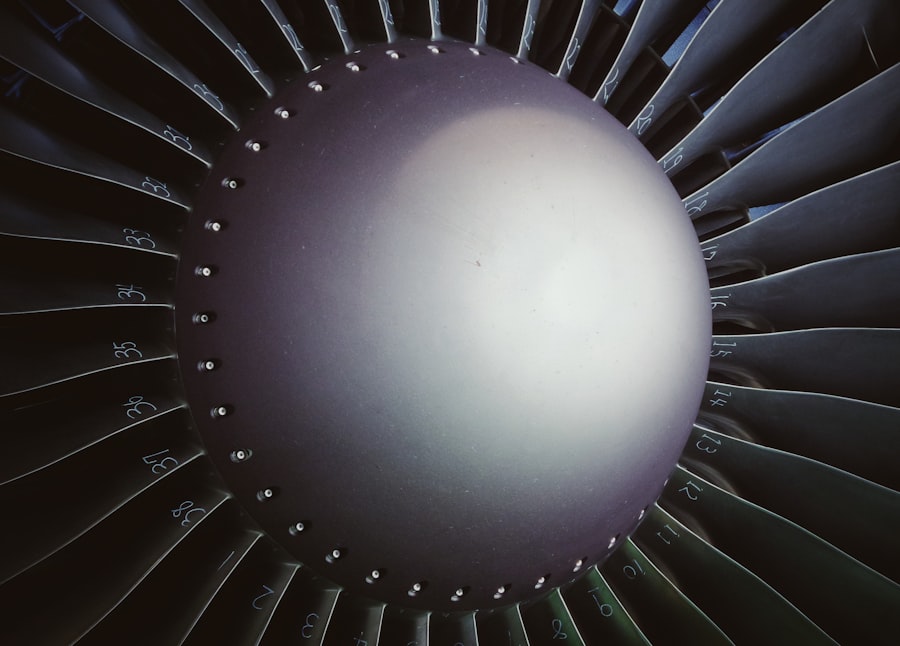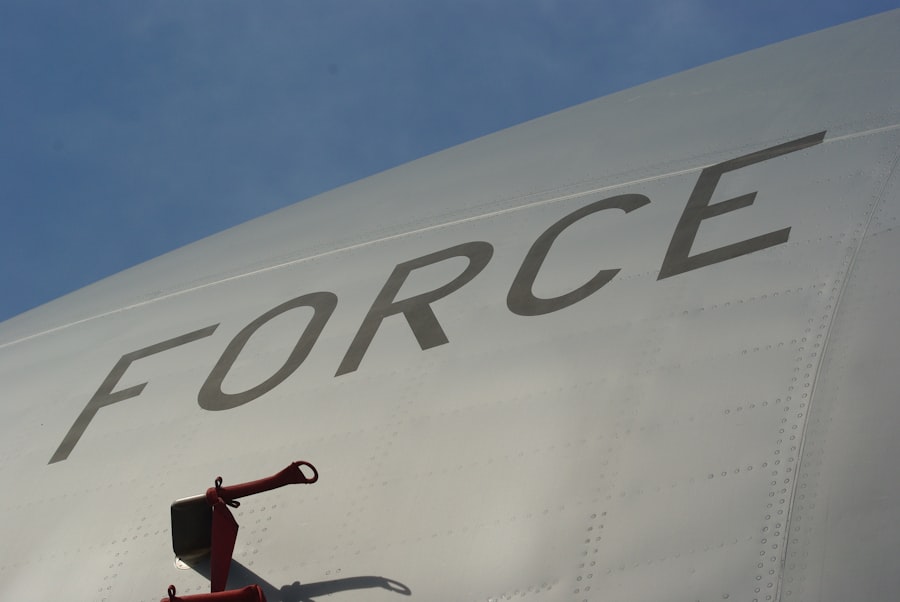The aerospace industry is a multifaceted sector that encompasses the design, development, and production of aircraft, spacecraft, and related systems and equipment. This industry plays a crucial role in global transportation, national defense, and space exploration. It is characterized by its high level of technological innovation and significant investment in research and development.
The aerospace sector is not only vital for commercial air travel but also for military applications and the burgeoning field of space exploration. As the world becomes increasingly interconnected, the demand for efficient air travel and advanced aerospace technologies continues to grow, driving the industry forward. The aerospace industry is divided into two primary segments: civil aviation and military aviation.
Civil aviation includes commercial airlines, cargo transport, and general aviation, while military aviation encompasses defense contractors and government agencies involved in the development of military aircraft and systems. The industry is also witnessing a shift towards sustainability, with companies exploring alternative fuels and more efficient designs to reduce their environmental impact. This evolution is essential as global concerns about climate change and resource depletion become more pressing.
The interplay between technological advancement, regulatory frameworks, and market demands shapes the future trajectory of the aerospace industry.
Key Takeaways
- The aerospace industry is driven by innovation from key players like Boeing, Airbus, and Lockheed Martin.
- Boeing and Airbus lead commercial aviation with groundbreaking aircraft designs and technologies.
- Lockheed Martin and Northrop Grumman focus on advancing military and aerospace systems.
- SpaceX is transforming space exploration with reusable rockets and ambitious missions.
- Raytheon Technologies plays a critical role in aerospace defense and global technology integration.
Boeing: Pioneering Innovation in Aerospace
Boeing, one of the largest aerospace companies in the world, has been at the forefront of aviation innovation since its founding in 1916. The company has a rich history marked by numerous milestones, including the introduction of the first commercial jetliner, the Boeing 707, in the late 1950s. This aircraft revolutionized air travel by making it more accessible to the masses, setting the stage for the modern airline industry.
Boeing’s commitment to innovation is evident in its continuous investment in research and development, which has led to advancements in aerodynamics, materials science, and avionics. One of Boeing’s most significant contributions to aerospace technology is the development of the 787 Dreamliner. This aircraft incorporates advanced composite materials that reduce weight and improve fuel efficiency.
The Dreamliner also features cutting-edge aerodynamics and systems that enhance passenger comfort and operational efficiency. With its ability to fly longer distances with lower fuel consumption, the 787 has set new standards for commercial aviation. Boeing’s focus on sustainability is further exemplified by its efforts to develop eco-friendly technologies, such as biofuels and electric propulsion systems, which aim to minimize the environmental impact of air travel.
Airbus: Revolutionizing the Aviation Industry

Airbus has emerged as a formidable competitor to Boeing since its establishment in 1970. The company has played a pivotal role in transforming the aviation landscape through its innovative aircraft designs and commitment to passenger comfort. One of Airbus’s most notable achievements is the introduction of the A380, the world’s first full-length double-deck jet airliner.
This aircraft can carry over 800 passengers in a single configuration, significantly increasing capacity on high-demand routes. The A380’s design reflects Airbus’s dedication to maximizing efficiency while providing an unparalleled flying experience. In addition to its focus on passenger aircraft, Airbus has made significant strides in developing military aviation technologies.
The A400M Atlas is a prime example of this commitment; it is a versatile military transport aircraft designed to operate in various environments. The A400M combines advanced technology with operational flexibility, allowing it to perform missions ranging from troop transport to humanitarian aid delivery. Airbus’s dedication to innovation extends beyond aircraft design; it also invests heavily in sustainable aviation initiatives, including research into hydrogen-powered flight and electric propulsion systems that could redefine air travel in the coming decades.
Lockheed Martin: Advancing Military and Civilian Aerospace Technology
| Category | Metric | Value | Notes |
|---|---|---|---|
| Military Aerospace | Number of Aircraft Produced | Over 15,000 | Includes fighter jets, transport, and surveillance aircraft |
| Military Aerospace | Annual R&D Investment | Approximately 1.5 billion | Focused on advanced defense technologies |
| Civilian Aerospace | Number of Civilian Aircraft Components Supplied | Thousands annually | Parts for commercial aircraft manufacturers |
| Civilian Aerospace | Satellite Systems Developed | 50+ | Includes communication and reconnaissance satellites |
| Technology Innovation | Patents Filed Annually | 300+ | Covering aerospace, defense, and cybersecurity |
| Global Reach | Countries Served | 70+ | Military and civilian aerospace clients worldwide |
| Workforce | Number of Employees | Over 110,000 | Engineers, scientists, and support staff |
Lockheed Martin stands as a leader in both military and civilian aerospace technology, with a legacy that dates back to its founding in 1912. The company is renowned for its advanced military aircraft, including the F-22 Raptor and F-35 Lightning II, which represent some of the most sophisticated fighter jets in existence. These aircraft incorporate stealth technology, advanced avionics, and superior maneuverability, making them integral components of modern air combat strategies.
Lockheed Martin’s commitment to innovation is evident in its continuous efforts to enhance these platforms through upgrades and new technologies. Beyond military applications, Lockheed Martin is also involved in civilian aerospace projects. The company has made significant contributions to satellite technology and space exploration through its work on NASA missions and commercial satellite systems.
For instance, Lockheed Martin played a crucial role in developing the Orion spacecraft, designed for deep-space exploration missions beyond low Earth orbit. This spacecraft aims to carry astronauts to destinations such as Mars and beyond, showcasing Lockheed Martin’s ability to bridge military expertise with civilian aerospace advancements.
Northrop Grumman: Leading the Way in Aerospace Systems and Technology
Northrop Grumman has established itself as a key player in aerospace systems and technology since its inception in 1939. The company specializes in developing advanced systems for both military and civilian applications, focusing on unmanned aerial vehicles (UAVs), space systems, and cybersecurity solutions. Northrop Grumman’s UAVs, such as the Global Hawk and Predator drones, have transformed modern warfare by providing real-time intelligence and surveillance capabilities without risking human lives.
In addition to UAVs, Northrop Grumman is heavily involved in space exploration initiatives. The company has contributed to various NASA missions, including the James Webb Space Telescope, which aims to provide unprecedented insights into the universe’s origins. Northrop Grumman’s expertise extends to satellite technology as well; it designs and manufactures satellites that support communication, navigation, and Earth observation functions.
By integrating cutting-edge technology with innovative design principles, Northrop Grumman continues to push the boundaries of what is possible in aerospace systems.
SpaceX: Redefining Space Exploration and Travel

SpaceX has emerged as a revolutionary force in space exploration since its founding by Elon Musk in 2002. The company’s mission is to reduce space transportation costs and enable the colonization of Mars. SpaceX’s achievements include developing the Falcon 1 rocket, which became the first privately developed liquid-fueled rocket to reach orbit in 2008.
This milestone marked a significant turning point in the commercialization of space travel. One of SpaceX’s most notable innovations is the Falcon 9 rocket, designed for reusability. By successfully landing and reusing rocket boosters, SpaceX has dramatically reduced launch costs while increasing launch frequency.
This approach has made space more accessible for various applications, including satellite deployment and resupply missions to the International Space Station (ISS). Additionally, SpaceX’s Starship program aims to create a fully reusable spacecraft capable of carrying humans to Mars and beyond. With ambitious plans for interplanetary travel and a focus on sustainability through reusable technology, SpaceX is reshaping our understanding of what is achievable in space exploration.
Raytheon Technologies: A Global Leader in Aerospace and Defense
Raytheon Technologies represents a powerhouse in aerospace and defense through its diverse portfolio of products and services. Formed from the merger of Raytheon Company and United Technologies Corporation in 2020, this conglomerate combines expertise in defense systems with advanced aerospace technologies. Raytheon Technologies focuses on developing cutting-edge solutions for both military applications—such as missile defense systems—and commercial aviation technologies that enhance safety and efficiency.
The company’s innovations include advanced radar systems like the AN/SPY-6, which provides enhanced detection capabilities for naval vessels against various threats. In addition to defense technologies, Raytheon Technologies plays a significant role in commercial aviation through its Pratt & Whitney division, which manufactures high-performance jet engines known for their reliability and efficiency. The company’s commitment to research and development ensures that it remains at the forefront of technological advancements within both sectors.
The Future of Aerospace and the Companies Shaping It
The future of aerospace is poised for transformative changes driven by technological advancements and evolving market demands. Companies like Boeing, Airbus, Lockheed Martin, Northrop Grumman, SpaceX, and Raytheon Technologies are at the forefront of this evolution, each contributing unique innovations that shape how we travel through air and space. As sustainability becomes an increasingly critical concern for society at large, these companies are exploring new technologies that promise to reduce emissions while enhancing performance.
The ongoing competition among these industry giants fosters an environment ripe for innovation. From electric propulsion systems to autonomous flight technologies, the next generation of aerospace solutions will likely redefine our understanding of air travel and space exploration. As we look ahead, it is clear that these companies will continue to play pivotal roles in shaping not only the future of aerospace but also our broader understanding of transportation technology as we venture into new frontiers both on Earth and beyond.




